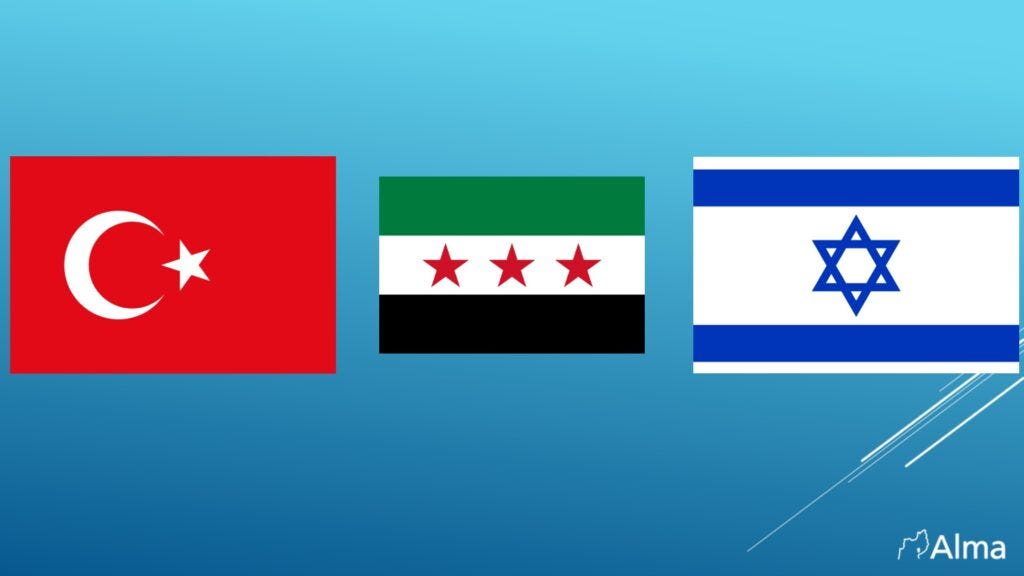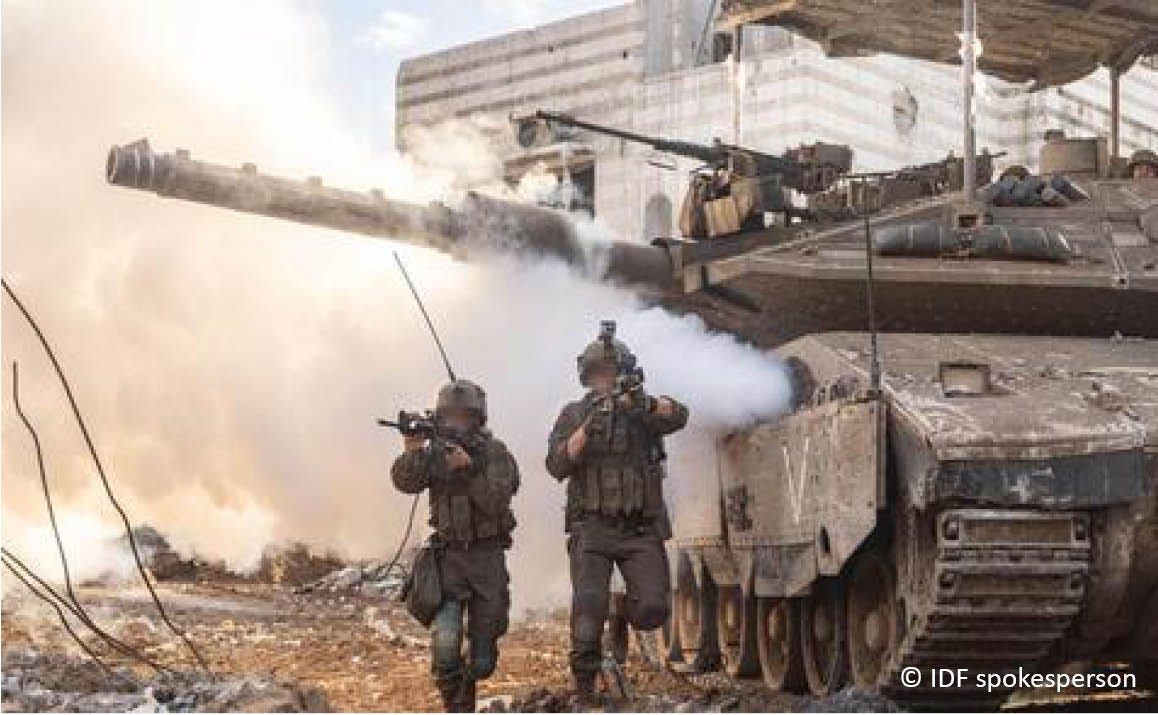The Burden of Proof is on Israel’s Enemies to Prove They Will Embrace Peace—No Surprise, They Are Failing the Test—What Should Israel Now Do and Does Time Work For or Against Israel?
March 1, 2025 - Issue #73
Thank you to all my subscribers and followers. You honor me with your presence. If you think this article of value, please share it with others. Please also consider indicating if you see value in the article by “liking” it or adding a comment. Doing so helps me determine the subject of future articles that you might find beneficial and, through social media, broadcasts my work to a wider audience.
It has been three weeks since my last newsletter. During that time, I watched, waited, and worried. During that time, Hamas’ cruel and humiliating display of the hostages before they were released infuriated me, news that the Bibas babies were murdered by the bare hands of Hamas’ captors enraged me, and I was shocked but not surprised by Hamas’ depraved attempt to hold onto the body of Shiri Bibas by substituting a Gazan women’s body for hers in a released closed casket.
On the other hand, I have been encouraged by Israel’s steadfast insistence that a deal is a deal and its willingness to resolutely and successfully insist on that principle when Hamas, Hezbollah, and the Lebanese Armed Forces fail to uphold their side of the bargain. I also have been heartened by Israel’s internal politics that despite many differences recognizes that if the nation is to survive it must forcefully meet its remaining external challenges. However, here, in the United States, and around the world, antisemitism remains on the rise despite now more challenged than ignored. Nevertheless, Jew hatred and Israel hatred remain intertwined. No better example of that is in the link I provided in this newsletter to an article about two nurses in an Australian hospital threatening to kill Jews and Israelis.
And Israel has reached a turning point. It must decide between two divergent paths, either victory or else capitulation to some form of what existed prior to October 7—whether to defang its enemies that have a fundamental desire to destroy the Jewish State versus allowing them to strengthen and reform along Israel’s borders. Striving for victory entails more present risk but enhances the likelihood of ending the conflict and finding peace. Alternatively, the pre-October 7 kick-the-can-down-the road approach based more on hope and deferral of confrontation and pie-in-the-sky views of its enemy’s intent than recognition of reality might be the safest path for today but increases the existential threats of tomorrow. The choice is now in Israel’s hands.
Therefore, I think it worthwhile to provide you with a brief survey, country by country, of the military threats Israel faces today and what it is doing about them, followed by my view of the road Israel must travel over the next few months to set the stage for a secure a safe future.
Gaza
Phase one of the latest ceasefire with Hamas is now over. Negotiations have begun over an extension of Phase One (which Hamas rejected today) or movement into Phase two. But unless Hamas exhibits a newfound willingness for its leadership to leave Gaza and its membership to disarm—or Israel backtracks on its core demand for Hamas to lose the ability to govern Gaza—Phase Two will never be finalized and sooner or later (likely sooner) the fighting in Gaza to evict Hamas will renew.
During Phase One, Israel recovered 25 live hostages with varying degrees of severe psychological distress and physical trauma. Almost all were callously displayed on a stage before masses of exuberant Gazans (I’m done arguing with any that think there are more than a few innocents in Gaza other than children of a tender age). Most were forced through physical or psychological means to humiliate themselves in various ways including waiving or speaking to the crowds, holding signage, and even in at least one instance, kissing captors. A few were dressed in fake army uniforms even though they were not in the IDF when captured. All was captured by Al Jazeera television, which says a lot about Qatar’s state sponsored news site.
In addition, Hamas released eight bodies of deceased hostages to Israel. Forensic examinations were done on all of them. The examinations revealed that the Bibas children were killed by bare hands (I imagine strangled or suffocated). Then, Hamas desecrated their bodies in a failed attempt to cover up the cause of their death. Their mother was also killed in captivity by her captors, as it appears were some of the other hostages whose bodies were returned.
In return, Israel released almost 2,000 prisoners, many of which were serving life sentences for killing Israelis. Their release has called into question in Israel whether terrorists convicted of murder should be subject to the death penalty to avoid having to release them if Israel’s enemies kidnap Israelis in the future.
Meanwhile, Israel has prepared its forces to move back into Gaza and has retained some its positions in the Philadelphi corridor dividing Gaza from Egypt. Remember, because most media may not remind you of this, Israel only agreed to complete its withdrawal from the Philadelphi corridor if by the 50th day a Phase Two deal is completed.
As for Hamas, it is important to recognize Israel’s success. Military capability is traditionally measured in the quality and depth of leadership, the number of formations of significant size that can impact the battlefield, and the quality and quantity of equipment. Based on these measures, Hamas’ military capability is a shadow of its formal self. But what remains is a mass of newly recruited young cadres that lack training but possess guns. That has the making of a guerilla army and is the potential muscle behind Hamas maintaining governing control in Gaza if not effectively challenged. That ill-trained group, along with the remaining strategic tunnels and the likely thousands of newly placed boobytraps, is what must still be confronted in a new offensive for Israel to achieve a meaningful victory.
Judea and Samaria (West Bank)
Here, seeing that the Palestinian Authority (PA) has neither the capability, nor will, to take on Hamas’ terror network in Judea and Samaria, the IDF has taken the offensive to root out terrorist cells in Jenin and Tulkarm and elsewhere. There, Hamas and Islamic Jihad have established large and plentiful terrorist cells purposed with killing Israelis with the help of significant Iranian financing and weapon supply. Even to the extent of enacting a new October 7.
Tulkarm is located on the border with pre-1967 Israel and adjacent to Highway Six, the main superhighway connecting northern and central Israel. I have passed by Tulkarm while driving on Highway Six multiple times and always thought how easy it would be for terrorists to fire at my vehicle. And since October 7, it is also abundantly clear that if terrorists in Tulkarm were left alone, they could cross into pre-1967 Israel like what their Hamas brethren did adjacent to Gaza.
Jenin is in the northern part of Samaria, close to pre-1967 northern Israel. It has long been a hotbed of terrorist activity but recently the threat emanating from there has magnified.
Also, recently, due to legislated financial pressure from Israel and the United States, the PA made a show of supposedly giving up its “pay to slay” program in which terrorists (or their families) that killed Israelis are financially rewarded by the PA. Now, the PA announced, that program will be folded into another program that makes payments based on need to all Palestinians under the PA’s jurisdiction. It would be easy to gloss over concerns by saying the devil will be in the details. However, Palestinian Authority President Mahmoud Abbas made clear that nothing has changed when he said in a speech to Fatah’s Revolutionary Council about the new program,
“Even if we have one penny left, it is for the prisoners and martyrs. I will not agree, and you will not agree, to reduce any obligation, any interest or any penny given to them. They must receive everything, as it was in the past, and they are more precious than all of us!”
And there is reporting that many of the terrorists Israel released over the last several weeks will be millionaires when they receive back due payments from the PA. Therefore, it is clear the devils will still get paid.
Lebanon
Pursuant to the ceasefire agreement, the Lebanese Armed Forces (LAF) were to take over and/or dismantle Hezbollah’s infrastructure and weapons depots in southern Lebanon as well as stop Hezbollah’s forces from returning to the region. There is little proof that has happened other than on a very small scale, and little confidence that it will happen due to Lebanese politics and the makeup of the LAF (see the link below to an extensive report on the subject written by the Alma Center). Therefore, Israel received a formal extension until February 18 to leave Lebanon and an apparently informal extension/acquiescence to remain in five strategic areas since then despite objection from Lebanon. These locations control high ground from which Hezbollah could launch attacks and/or use observation points to threaten Israeli settlements through ground infiltration and direct fire. They also match with locations from which Hezbollah’s Radwan forces planned to attack into Israel.
Israel’s retention of these positions is not by permanent plan, but due to frustration with the LAF because the LAF has not carried through with its obligations and because Hezbollah is trying to regain its strength and influence in the border region—likely with some success. To ensure the safe return of Israeli citizens to their homes, Israel cannot permit that. Having driven the border roads and visited the border towns at risk myself, I can attest that the locations that the IDF selected are essential to provide a sense of safety for Israelis returning to their homes. Given what has occurred over the last seventeen months, who in their right mind would bring their families back home based on trust not backed by deeds?
Also disturbing, is that Hezbollah succeeded in placing two of its members and three of its allied Amal movement members in the cabinet. Of greatest importance, is that a Hezbollah affiliated Amal member holds the Finance Minister position because Lebanese law requires his signature, along with the President and Prime Minister, on most government decisions. Therefore, it appears that the chance for Lebanon to disassociate its government from Hezbollah may have been lost, or at least blunted. That does not bode well for keeping Hezbollah out of southern Lebanon and recovering its strength. We shall see.
And on a final note, former Hezbollah chief, Hassan Nasrallah, was buried in a huge celebration designed to show Hezbollah still maintains strength and power. However, Israel had its own message to send. In a show of force and impunity, Israeli air force planes loudly flew over the assembled masses. Meanwhile, other planes attacked Hezbollah’s forces elsewhere that were violating the ceasefire. In the Arab world images, not just facts, matter. It’s not over by a longshot in Lebanon.
Syria
In Syria, for now, it really boils down to who is its new leader, and will he succeed in unifying his country? Is he the terrorist that he was when he called himself, Abu Muhammad al-Julani, or is he his former and now again name, Ahmed Hussein al-Sharaa, the professed statesman-like new leader of Syria. For now, we do not know. And for now, he appears preoccupied with trying to bring Kurdish forces in northern Syria into the fold while also dealing with Alawites and other factions that continue to embroil Syria. This means, that although al-Sharaa (I’ll call him that for now) does not like what Israel is doing in southern Syria, he is not likely to pick an unwinnable military fight with the Israelis in the near to mid future, although al-Sharaa might ratchet up an attempt to bring international political pressure into the picture.
Israel, on the other hand, is taking no chances. For now, it maintains control of a strategic point high on Mount Hermon and is seeking to demilitarize an area in Syria that abuts Israeli territory. To do that, the IDF is maintaining at least seven small bases in a narrow strip of land inside Syria and is using its military might to prevent the establishment of any Syrian military, Hezbollah or Iranian controlled militia, or any other terrorist group forces in a region south of Damascus and extending to the Golan Heights. Also, Israel has reached out to Syria’s Druze community in the region, offering them protection and assistance as required.
Turkey
In late December, Turkish President Recep Tayyip Erdogan delivered a speech during which some in the crowd yelled out, “Mr. President, take us to Jerusalem.” Erdogan responded, “Patience brings victory.”
Turkey is a member of NATO and has an army second only in size in NATO to the United States even though it is not nearly as well equipped, trained, or motivated. However, Turkey is also building missiles with a range capable of reaching all of Israel and has a vibrant drone program. So, the question is, what is Turkey up to? Already, Erdogan has steered the downfall of the Assad regime (Erdogan was once friends with Assad). And, in recent years, Erdogan has become sharply critical of Israel. Will Turkey directly attack Israel? Likely not. But will Erdogan seek to use Syria, whose leadership is indebted to him, as a proxy for threatening, coercing, and even striking Israel? Much more likely so.
Erdogan is well aware that the Ottoman Empire, which was based in what is now Turkey, controlled huge swathes of the Middle East including Egypt for hundreds of years until its defeat in World War One. Does he have a plan to regain all of that lost glory for his homeland? Unknown. But he certainly wants to increase his influence in the region and sees Israel as a blocking force to his ambitions. Where that will go, we will see. But it is a reason that Israel cannot be complacent even if Iran were to fall because a new power antithetical to Israel’s interests is arising.
Iran
Iran is not out of the game although it’s ability to defend its assets has been weakened, its proxies in Gaza and Lebanon diminished, and it is now experiencing more financial duress while internally a potentially potent domestic opposition lurks. But Iran still has its nuclear card, and it has likely strengthened its nuclear hand. Estimates, based on publicly available knowledge are that Iran has the capability to build multiple nuclear weapons within months should it so chose (of course, the timeline could be less if Iran has managed to keep components of its program secret). Therefore, it is an issue that must be dealt with now, not later. Otherwise, we will soon see the Iranians playing its nuclear cards in nefarious ways.
Iran has not given up on Hezbollah and still supports the Houthis, the Iraqi Shiites, and likely Hamas. Iranian representatives and other international supporters of Iran’s agenda were present at Nasrallah’s February funeral. There, Iranian delegates issued statements threatening Israel. In addition to meeting with Lebanon’s new President (who pointedly did not attend Nasrallah’s funeral). Likely, they also had personal contact with Hezbollah’s new leaders during which I doubt the conversation was limited to a condolence call. Also, Iran has continued its program of funding Hezbollah. In February, on two different days, Iranian cash shipments on the person of visitors by plane to Beirut were intercepted by Lebanese authorities. One can be certain that they are the tip of the monetary iceberg flowing from Iran to Hezbollah, not the entirety of it.
The Issue of Time
For now, Israel’s antagonists are on their back foot—but their front foot can easily regenerate. With time, they will lean forward again.
Hezbollah has seen its weapon stock decimated and its ground forces weakened. But the same thing happened after the Second Lebanon War in 2006. Then, in the aftermath of that war, Hezbollah was left with a missile stockpile in the thousands and weakened ground force—not too dissimilar to today. But over the next seventeen years, Hezbollah reformed and grew to a monster with two hundred thousand missiles and rockets that far exceeded in many orders of magnitude what it was before the 2006 war. That will happen again in future years if not stopped.
In Syria, there is an indeterminate period before the threat along the border will mount once again if not blocked. For now, Syria’s present leader will focus on bringing the disparate parts of Syria together. Meanwhile, Turkey will likely focus on breaking up the Kurdish hold on northern Syria, a goal that matches Syria’s present leaderships’ plans. But over time their focus will likely turn to southern Syria—and Israel.
Hamas is now a mere shadow if its former self. It no longer has the missiles it would need to threaten Israel, its command structure is in shambles, and its manpower not trained. But what it does still have is numbers, rifles to arm them, and a place for them to hide in the tunnels. And it has a border with Egypt that if unblocked by the IDF, will become porous again. Left to its own devices, controlling Gaza would not now be a problem for Hamas. Left alone for a few years to rebuild with its present structure in place, Hamas will succeed in doing so. Egypt cannot be counted on. Neither its present government, or any future government, will interfere due to their corruption, ideology, or incompetence. Thus, if Hamas remains the governing power in Gaza the weapons will flow through Egypt into Gaza, new tunnel construction and repair using confiscated materials sent for rebuilding civilian population centers will be robust, and rudimentary weapons factories will crank out new missiles to fire at Israel. This is the future if the Hamas problem is not dealt with now.
Regarding Iran, the timeline is most short. There is a huge difference between dealing with an Iran with nuclear weapons, deliverable or not, and an Iran without them. Here we are looking at today, not next month or next year. Also, Iran is trying to reconstitute its air defenses, and if I were them, likely searching for ways to deter an Israeli strike now. This is a process that could be very soon, especially if the Soviet Union comes to Iran’s aid. There is now a window today to deal with the Iranian nuclear threat. In a matter of days, weeks, or certainly months, that window will morph into a wall.
What is Israel Doing and What Might it Do?
Clearly, Israel has adopted a policy of relying on facts on the ground rather than promises, philosophy, or pie in the sky dreams. This is a distinct departure from the pre-October 7 world and is laudable. The basic premises are:
Israel will not depend on deterrence.
Israel will not depend on agreements based on words alone.
No entity that wants to destroy Israel, or has wanted to in the past, will be permitted to establish bases along Israel’s borders or weapons from afar that can do so.
Before entering agreements of a long-lasting nature (such as with the PA or any succeeding Palestinian institution regarding some form of territorial compromise or two-state solution) or with past enemies, the burden of proof is on Israel’s enemies to prove their desire to drop their swords. And to meet that burden, words must be matched by deeds of a long-standing nature. Thus, for example, no deals with an enemy that requires Israel to risk its security while the enemy continues to use its educational system to poison another generation into hating Israel.
No reliance on any international guarantees—only facts on the ground matter.
Should Israel enter into any agreement—whether short term or long—absolute compliance by the other side will be required. There will be no tolerance for deviations, no matter how small.
What does this all mean in practical terms?
I think the following:
Regarding Iran, there can be no delay, especially if the United States is supportive, Iran must be told that it must end its nuclear weapons program now and immediately permit international inspectors to monitor any site inspectors wish on a continuing basis. Otherwise, Israel should make clear that it will attack both Iran’s nuclear facilities and economic centers—most particularly those related to oil. Israel’s threat must be devastating and imminent. Just returning to negotiations without a deadline for compliance is not enough. That will only ensure what we all fear—a nuclear armed Iran.
Regarding Lebanon—Israel must hold onto the five strategic locations it presently commands until the LAF fulfils its obligations, and Hezbollah is permanently blocked from reentering southern Lebanon. Lebanon made a deal that Hezbollah accepted. There can be no deviations. No Hezbollah in southern Lebanon. That is the announced policy of the President of Lebanon but so far has not been backed up in a believable way by the Lebanese Armed Forces. In addition, Israel must continue to strike Hezbollah’s present missile force structure and any attempt to bring in more weapons. Otherwise, all there will be is a pause, Hezbollah will rebuild, and northern Israel will not thrive.
Regarding Syria—Israel must not leave the zones it presently occupies soon. Syria has the potential to become powerful again. Turkey is powerful now. Iran will continue to try to reestablish its influence in Syria. We are in the early days of a long process with an unforeseeable end. Should Syria’s present leadership want to embrace Israel down the road, Israel should be forthcoming but remain watchful until it is clear that Syria will not be anyone’s proxy again and that it truly wants a peaceful relationship with Israel proven by embassies, economic exchanges, and the like. Then, Israel should withdraw its forces. Not before
Regarding Gaza—It is hard for me to speak about “shoulds” with hostages still held in the dank, terrifying tunnels. But simply put, Israel cannot afford to do anything that permits Hamas to remain in power. I suspect, since this requirement is in direct opposition to Hamas’ insistence on remaining the governing power, that sooner or later there will be more fighting there (Israel must immediately restart its offensive push to eliminate Hamas in Gaza if Hamas does not agree to leave voluntarily but delay that if Hamas agrees now to release more hostages). The only chance of avoiding that may lay with the Qataris and the Egyptians. The United States could apply significant economic pressure on the Qataris to threaten to imprison or expel (for trial elsewhere) the Hamas leaders now living in luxury in Qatar if Hamas does not release the remaining hostages and leave Gaza. Similarly, the United States provides Egypt substantial aid. Some combination of withdrawing that aid and Saudi Arabia and the UAE and Qatar providing funding for Egypt’s huge debt from should be used to incentivize Egypt to allow Gazans that wish to leave do so and to pressure Hamas to leave as well. In fact, former Israel Prime Minister Lapid just announced a fascinating plan that would place Egypt in stewardship control of the rebuild of Gaza for a decade after which Egypt would return governance to Gazans. In return, Lapid suggested foreign funding might extinguish Egypt’s estimated 150 billion foreign debt thus stabilizing Egypt’s future. So far, Egypt has said no to that plan, as it has to any plan that ends Hamas’ rule while also helping Gazans. Egypt cannot be allowed to continue to say no. It must no longer be part of the problem but instead become part of the solution.
Regarding Judea and Samaria (West Bank)—Israel must act aggressively to thwart the rise of terrorist factions there before it becomes impossible to root them out. And, I must say, Israel must put an end to settlers taking vengeance on their own and prosecute those that choose to do so. Meanwhile, Israel must make clear the conditions necessary for progressing forward on a path for resolving territorial issues (I am not suggesting nor negating a two-state solution of some type). Those conditions must include an end to the education system that incites hatred for Israel, an end to corruption, no right of return, ending pay to slay payments and glorification of terrorists, stopping home-grown terrorism, and demilitarization—all of which must exist for a period of years before negotiations begin not just in promises. This path, holds the possibility of drawing in Saudi Arabia to a peace deal and also provides hope for a better future.
Israel through courage and ingenuity has reached a crossroads in time. Everywhere, it now has the advantage. But nowhere is time on its side. Therefore, it must now make decisions of long lasting effect—I say take the risks necessary for victory while there is an opportunity or else risk the bitterness of future defeat.
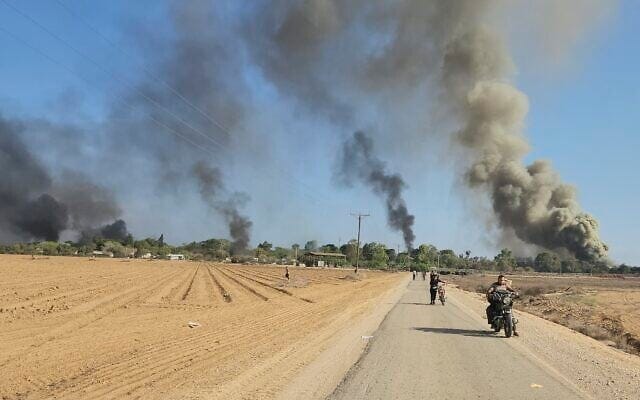
Entire Gaza Division was Overrun for Hours, and IDF Didn’t Know it; 767 Troops Faced 5,000 Terrorists—Written by Emanual Fabian for The Times of Israel—February 27, 2025
IDF Carried out Hannibal Directive, New 'Sword of Damocles' Operation on October 7—Written by Yonah Jeremy Bob for the Jerusalem Post—February 27, 2025
October 7 Probes: IDF's Slow Response on Day of Hamas Attack Due to Chaos, Commanders' Denial—Written by Yonah Jeremy Bob for the Jerusalem Post—February 27, 2025
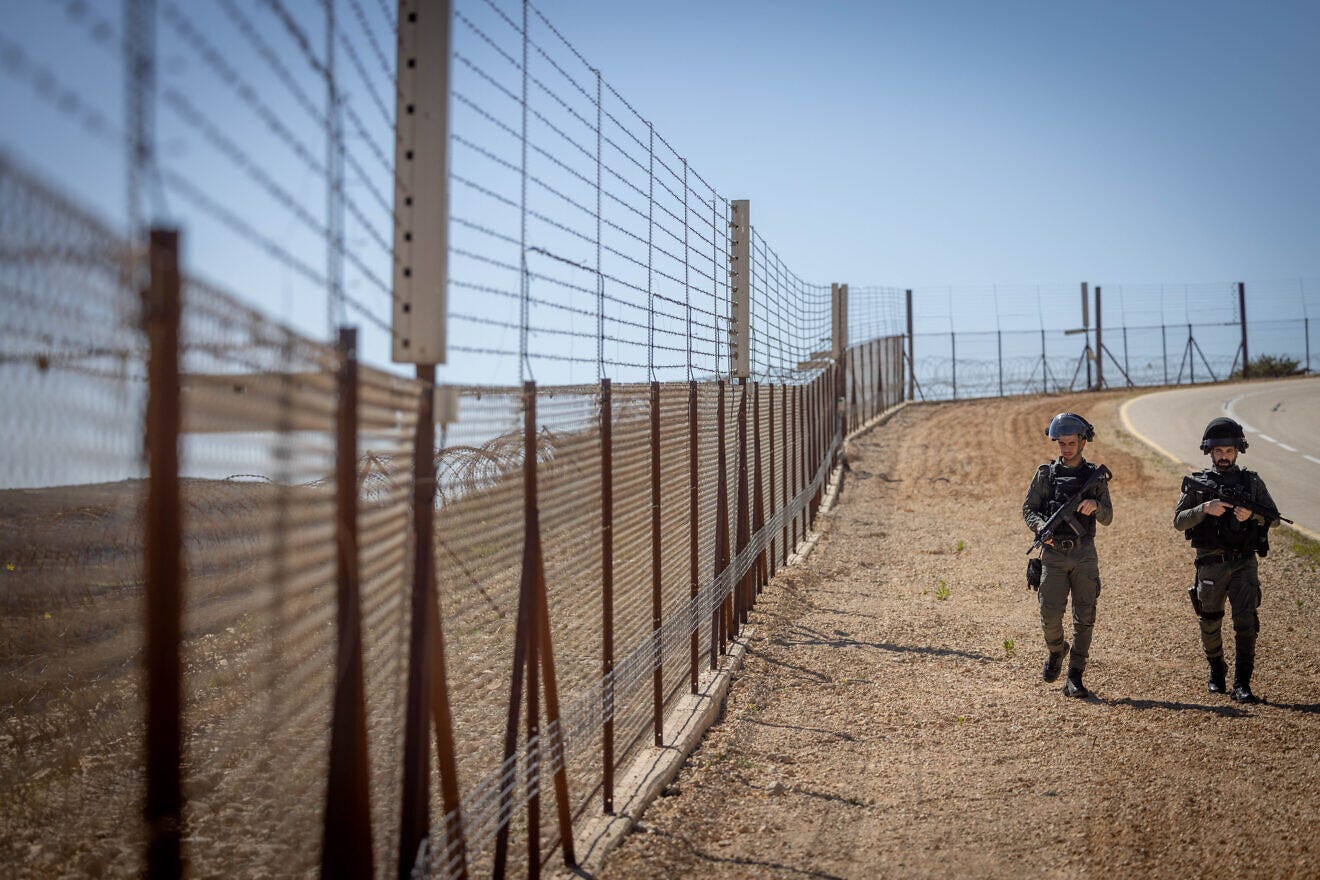
IDF Seizes Hamas Plans for Mass Attack in Judea, Samaria and Central Israel—Written by Akiva Van Koningsveld for the Jewish News Syndicate—February 27, 2025
Potential of the Turkish Threat – Direct and Indirect – to Israel; A Situation Assessment—Written by Yaakov Lappin for the Alma Research and Education Center—February 11, 2025
Special Report – The Lebanese Army—Written by Tal Beeri for the Alma Research and Education Center—February 25, 2025—Written by Tal Beeri & Zoe Levornik for the Alma Research and Education Center—February 18, 2025
How Did Israel Win the Iron Swords War?—Written by Col. (res.) Shay Shabtai for The Begin-Sadat Center for Strategic Studies—February 11, 2025
The October 7 War Is Only the First Act——Written by Brig. Gen. (res.) Eran Ortal for The Begin-Sadat Center for Strategic Studies—February 12, 2025
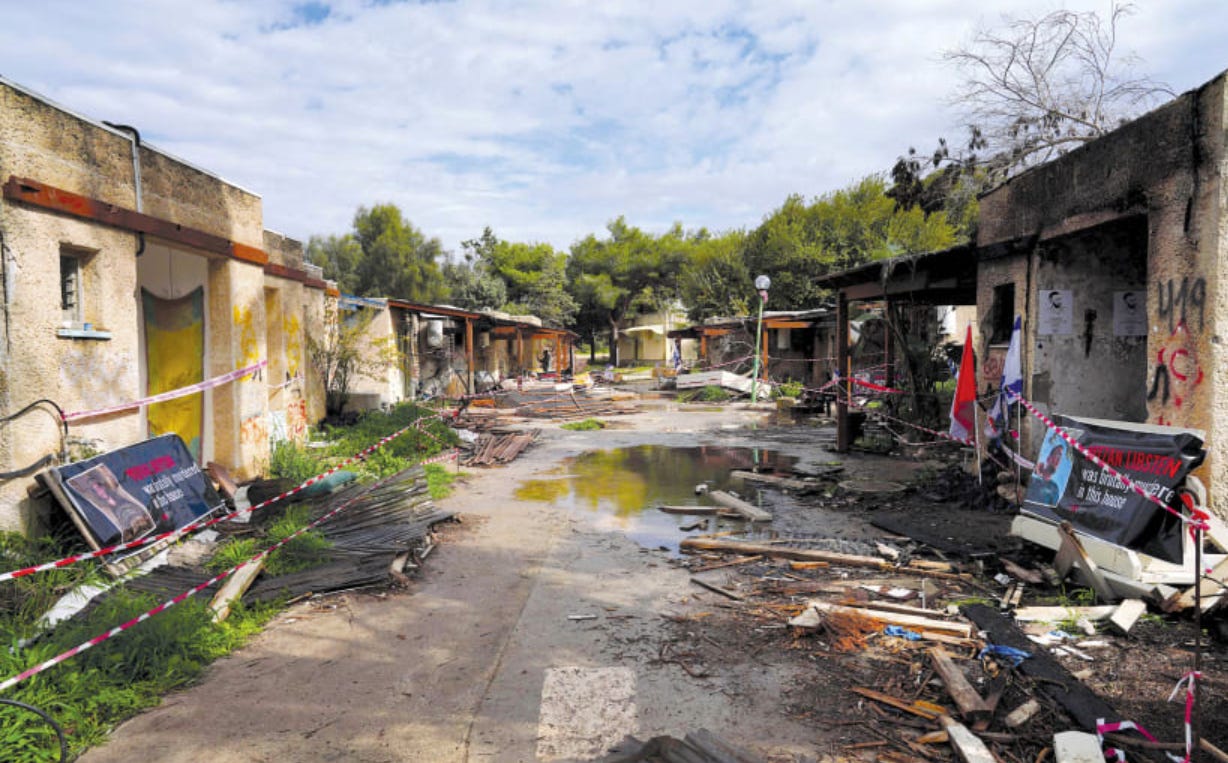
October 7, Gaza War Disability Stipends 5x Greater Than Pre-War Levels - Comptroller—Written by Eve Young for the Jerusalem Post—February 11, 2025

President Trump's Gaza Proposal Shifts the Diplomatic Landscape - Opinion—Written by Efraim Inbar and Yossi Kuperwasser for the Jerusalem Post—February 12, 2025
Trump Plan Puts an End to the Palestinian State Fantasy—Written by Jonathan Tobin for the Jewish News Syndicate—February 6, 2025
A Paradigm Shift for the Middle East—Written by Elliott Abrams for Foreign Affairs—February 7, 2025
Who Really Wants ‘Ethnic Cleansing’ in the Middle East?—Written by Brendan O’Neill for Spiked—February 8, 2025

Iran Secretly Rushing Nuclear Peapon Production, US Believes - NYT—Written by Jerusalem Post Staff for the Jerusalem Post—February 5, 2025

Eyal Zamir Likely to Lead IDF Into a New Era: 'Small and Smart' is Over—Written by Amotz Asa-El for the Jerusalem Post—February 7, 2025
Australian Jews Question Safety at Hospitals After Nurses Threaten to Kill Jews, Israelis—Written by Michael Starr for the Jerusalem Post—February 12, 2025
Israel’s Struggle with Hezbollah—A War Without End is now available in eBook and hardback format on Amazon and IngramSpark. This compelling narrative explores Hezbollah’s origins and cancerous growth, traces Israel’s response, and reveals Israel’s present readiness to meet Hezbollah’s challenge.
Cliff Sobin
Important Link—Alma Research and Education Center: Understanding the Security Challenges on Israel’s Northern Border




